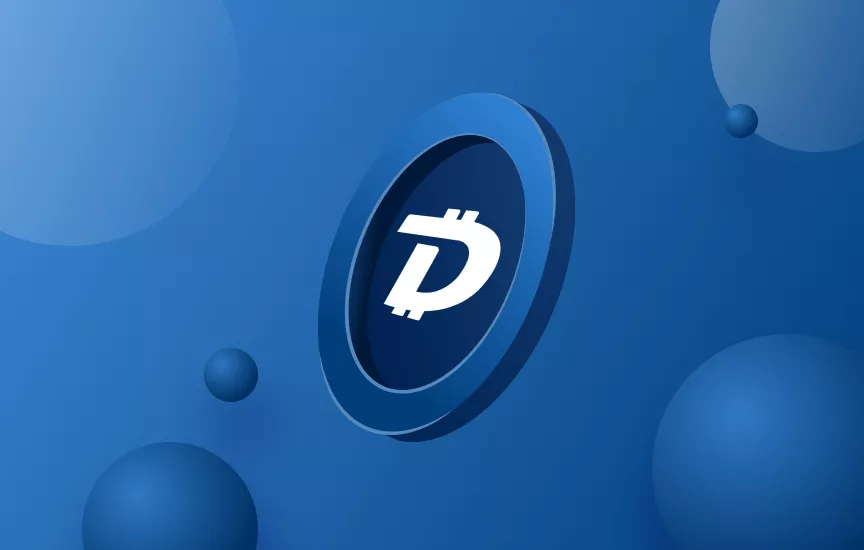It’s no secret that you lose purchasing power every year, being able to buy less goods with your fiat dollar.
DigiByte is the solution to the wrong that establishment governments have bestowed upon us.
What is DigiByte?
DigiByte is a truly decentralized UTXO blockchain that was fairly launched on January 10, 2014. DigiByte is the most decentralized Proof-of-Work-mined blockchain in the world. Decentralization means there is no central controlling entity able to dictate direction, terms, use of the network, changes, charges and fees, locking of funds, or undoing transactions.
The DigiByte blockchain is an immutable ledger; fully open source, released under the MIT license, and completely verifiable by any individual or entity. DigiByte is truly permissionless with no central controlling authority.
DigiByte has a maximum supply of 21 billion DigiByte, to be fully mined by the year 2035. While other blockchains only utilize a single mining algorithm to mine new blocks and introduce new assets into circulation, DigiByte has employed five unique and independent algorithms in a “MultiAlgo” solution since block 145,000 in September 2014. DigiByte holds the dominant hash-power in 3 of its 5 algorithms globally, by an order of magnitude more than any other competing blockchain. This provides greater security to the network while helping prevent any “rented hash power” from attacking the blockchain.
DigiByte Key Specifications
- Launch Date January 10th, 2014
- Genesis Block Hash “USA Today: 10/Jan/2014, Target: Data stolen from up to 110M customers”
- Blockchain Type Public, Decentralized, UTXO, Proof of Work, Multi-Algorithm
- Ticker Symbol DGB
- Maximum supply 21,000,000,000
- Block Reward Reduction 1% reduction monthly
- Block emission schedule Fully mined by 2035
- Mining Algorithms SHA256, Scrypt, Odocrypt, Skein, & Qubit
- Algorithm Block Share 20% per-algo, contested each block
- Difficulty Retarget Every block, 5 separate difficulties (Per-algo)
- Block Timing 15 seconds per-block (75 per-algo approx)
- Segregated Witness Support Yes (First major blockchain to activate)
What problem is DigiByte trying to solve?
DigiByte focuses on speed, security, and scalability. It prides itself on being “faster, more secure, and forward thinking.”
Speed
With significantly faster block timings than any other UTXO blockchain to date (15 seconds), DigiByte has encountered and overcome several issues that many other blockchains, such as Bitcoin, will not face until the advent of the next century. It is due to this forward-thinking nature that DigiByte adopted the SegWit protocol through a soft-fork consensus in 2017, being the first major blockchain to do so, well before Litecoin or Bitcoin adopted the upgrade.
Security
DigiByte has been leading innovation with the industry renowned DigiShield—a real-time difficulty adjustment mechanism which ensures the stability of block generation timing—despite exponential increases/decreases in mining hash power. DigiShield is utilized in a respectable number of other major cryptocurrency/blockchain projects, such as Ethereum, Dogecoin, ZCash and dozens more. DigiShield was originally created for a single mining algorithm, and shortly after DigiByte changed to MultiAlgo, it was ported and upgraded to become MultiShield. This allows for regular block timings across multiple mining algorithms, as well as an even block mining distribution between algorithms, while also preventing mining dominance in the event of a sudden inflow/outflow of substantial mining hash power.
Digi-ID is a fast and secure authentication method that can be used to replace standard usernames, passwords, two-factor timed one-time passwords, building swipe-cards, and more. Authentication with Digi-ID is designed to overcome many of the pitfalls and vulnerabilities with traditional security methods. This includes things such as SIM-swapping, rendering SMS authentication insecure, or phishing for rolling TOTP codes. Digi-ID can also be used for non-traditional authentication, such as games, phone/PC applications or building security. Digi-ID also does away with the need for multiple “accounts” as your Digi-ID is simply authorized access to a different aspect of a website, building, product, or platform. Rather than requiring a user to utilize a unique login for personal use, and another for company dealings, the user’s single Digi-ID can be utilized. Digi-ID is anonymous, with no information being stored or transmitted via the blockchain. There is also no personally identifiable information kept inside of the DigiByte mobile applications, nor any form of data-logging. This allows for easy compliance with GDPR regulations.
Scalability
DigiByte believes in on-chain scalability as a core tenet of its blockchain, with “second layer” protocols never expected to be the primary “solution” for increased throughput or transaction capacity. This on-chain scaling coupled with OP_codes and SegWit allows for a large number of usage scenarios, such as distributed applications (DApps), document notarization/validation, token issuance, and asset digitization.
Privacy
Dandelion++ protects the users’ privacy by effectively masking the source IP address from any snooping nodes, making it implausible for spectators to observe where a transaction began with any viable degree of certainty
Digital Assets
Digital Assets can be launched on the DigiByte blockchain with the DigiAssets platform. These assets can be both fungible or non-fungible tokens, credits, shares, event tickets, coins, trading cards, property deeds or titles, travel tickets, and more. The DigiAsset node network is decentralized and the software is open source for any business, coin, or organization to use.
History of DigiByte
DigiByte was founded on January 10, 2014, by Jared Tate.
DigiByte originally utilized the Litecoin codebase, with a completely independent blockchain and a unique Genesis Block. It has undergone several non-contentious soft-forks and hard-forks, none of which culminated in a chain-split, but rather a complete consensus resulting in seamless upgrades of the entire DigiByte network. DigiByte never held an ICO but was fairly launched in an open and transparently planned manner. DigiByte does not take a percentage of block-rewards for a founder’s fee. The minimal 0.5% pre-mine was given away in its entirety to community members in the first month of its existence to incentivize early client downloads, ensure the survival of the blockchain, and to develop the original Android/iOS applications.
The principles on which DigiByte is based
DigiByte embraces the Bitcoin core ethos of “Do not trust, verify”, in that no entity should ever need be “trusted” in order to send/receive DigiByte (DGB) or to store/retrieve data from the DigiByte blockchain. Jared Tate aimed to create a blockchain that addressed many of the perceived shortcomings of Bitcoin. DigiByte originally started out as a Scrypt-only mined blockchain, with 60 second block times and a two-hour difficulty retargeting frequency. Compared to every other Proof-of-Work UTXO blockchain that existed during its 2014 launch, this was considered incredibly revolutionary, and it still is to this day. Although the block-timing has changed with network upgrades, the maximum supply of DigiByte will always remain fixed at 21 billion and the last DigiByte to be mined is scheduled to occur prior to the year 2035. DigiByte was created to be “forward-thinking,” with two primary objectives—cybersecurity and on-chain scalability. This is why the news article headline, “USA Today: 10/Jan/2014, Target: Data stolen from up to 110M customers,” was hashed into the Genesis Block. These guiding principles have remained in effect over the past five years and will continue to guide the future of DigiByte.
Conclusion
DigiByte is one of the few forward-thinking blockchains that is not merely limited to being used as just a digital currency (despite the fact that DigiByte truly excels in this area over and above every other Proof of Work blockchain), but rather as a multifunctional and highly purposed blockchain. This was one of the many reasons why the founder, Jared Tate, named the project DigiByte as opposed to including “coin” in the name as many other projects have.
DigiByte as a project and community are not content with the status quo, in any way. They are always pushing forward, working to improve the project and the world we live in.
DigiByte is committed to being an industry-leading project that can easily say it is faster, more secure, and more decentralized than any other Proof-of-Work blockchain project. This comes as a result of being MultiAlgo, with MultiShield security, combined with the drive from the users and community to always grow and perform better.
Through more than seven years of active development and pushing the boundaries of a UTXO blockchain, DigiByte has not only a proven track-record of rapid and secure transactions, but also an incredibly bright and promising future through its ever-developing use-cases, and of course, its dedicated and driven community of volunteers.
Learned something new? Take the quiz for a chance to win some DGB this holiday



